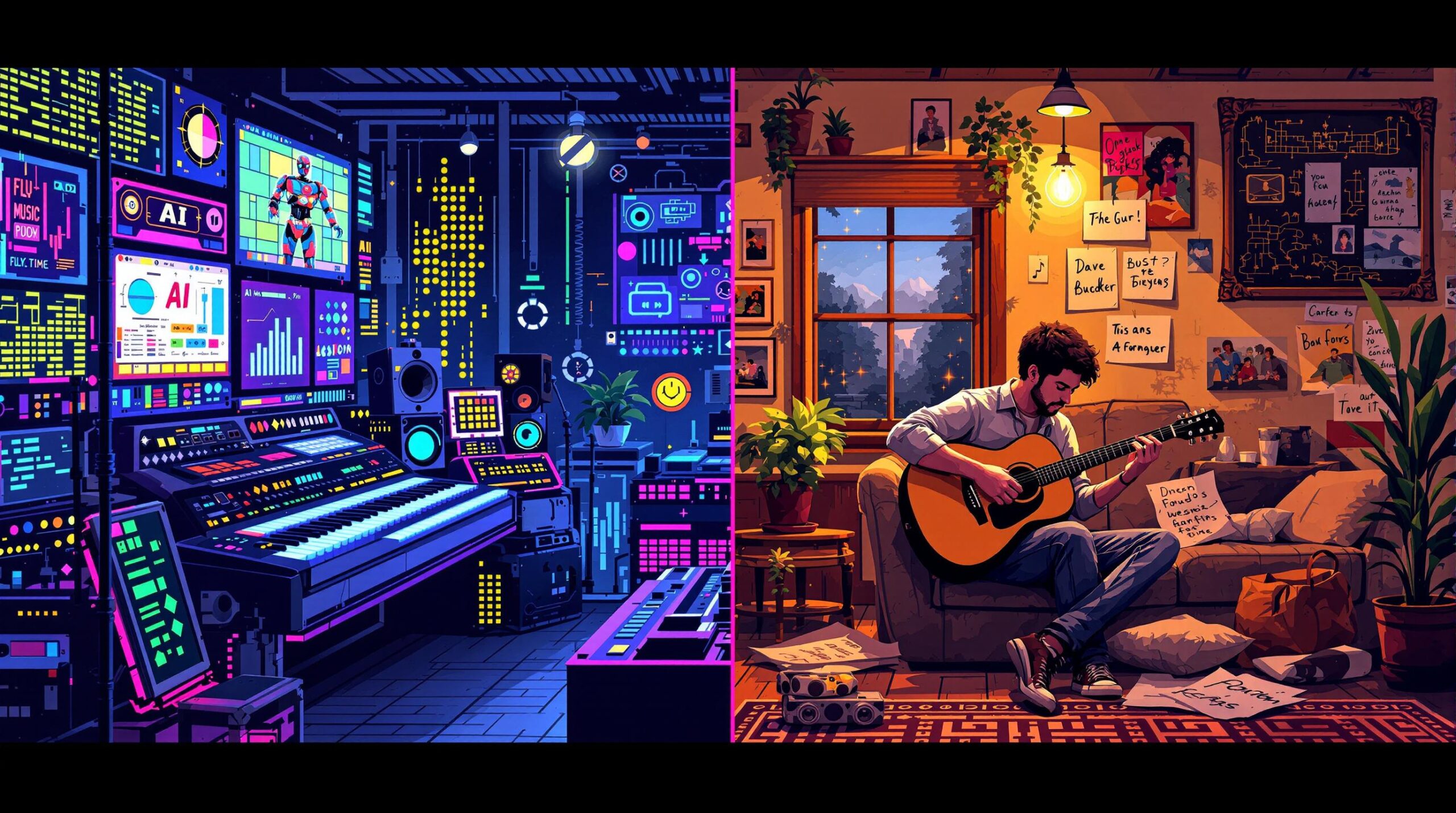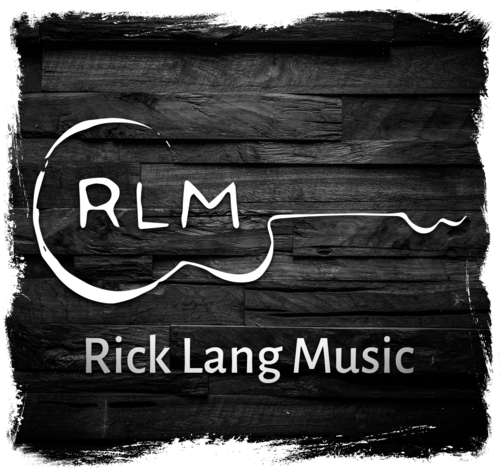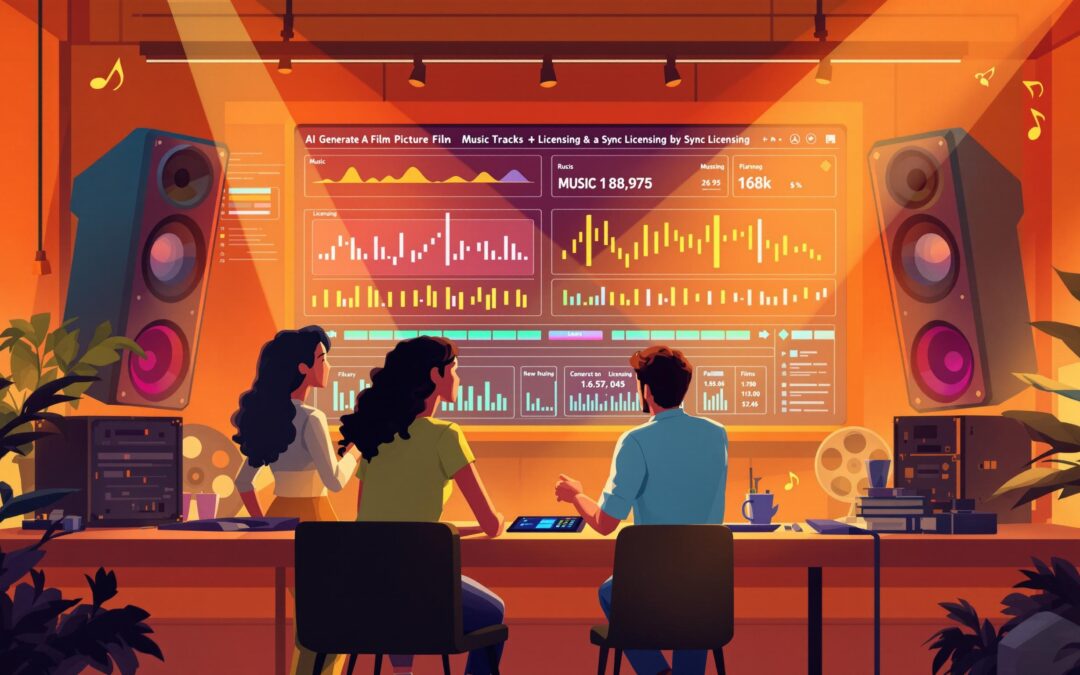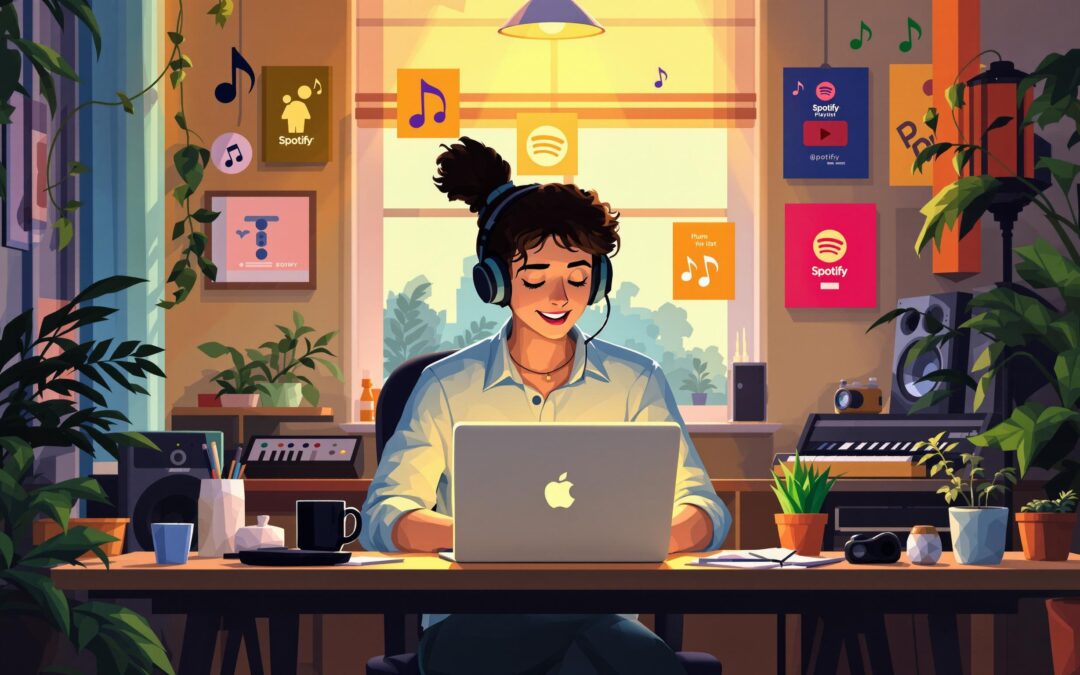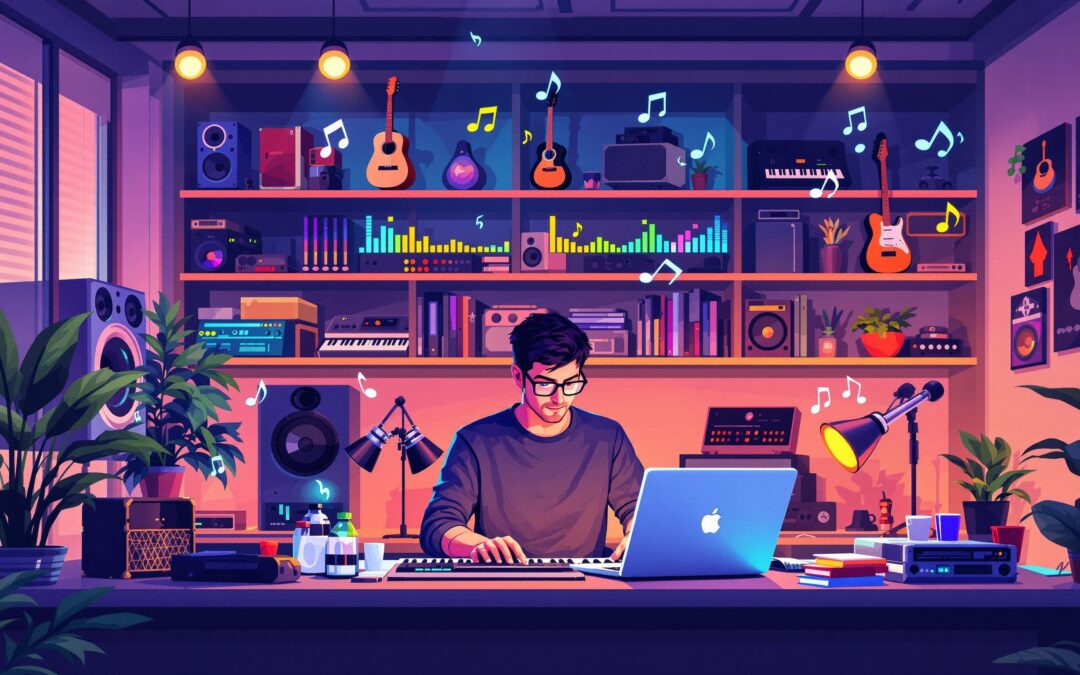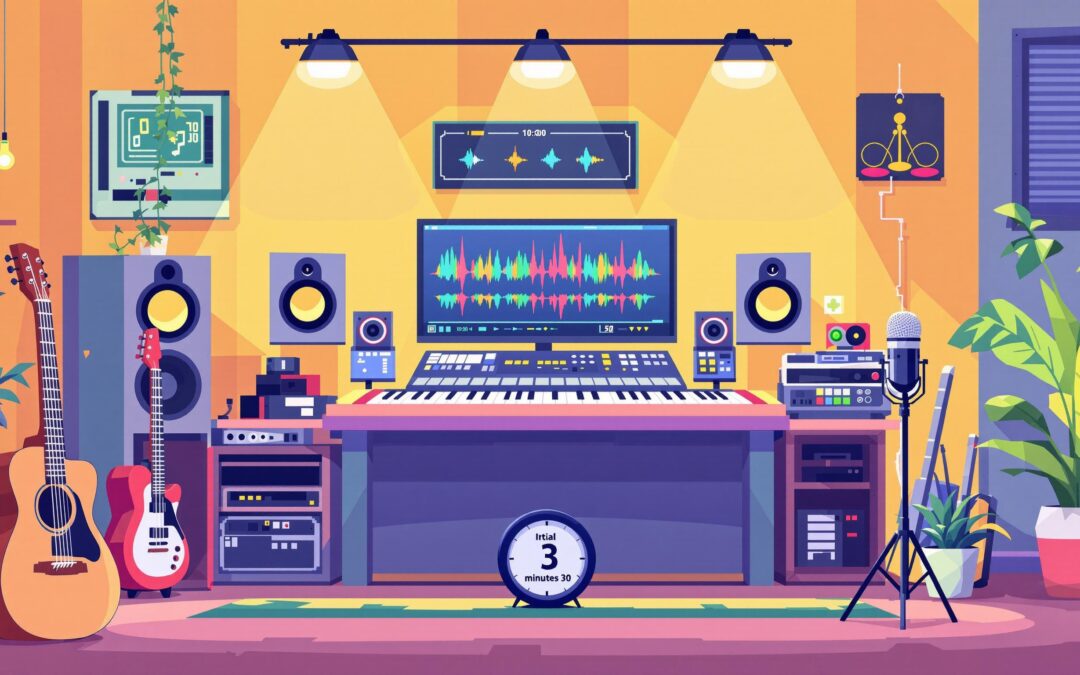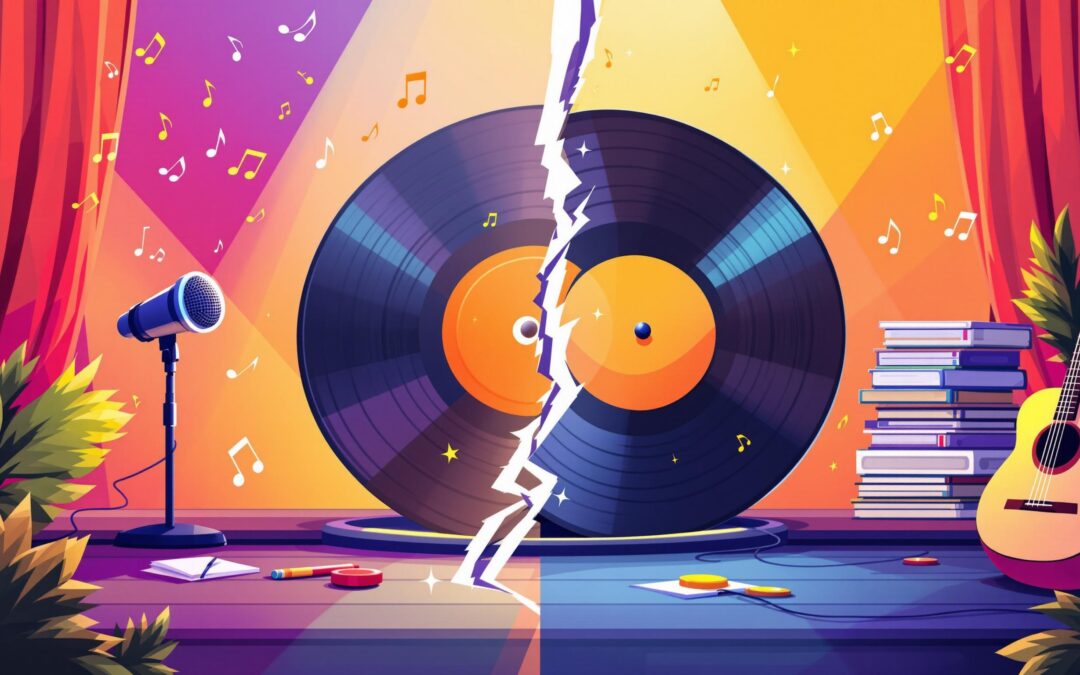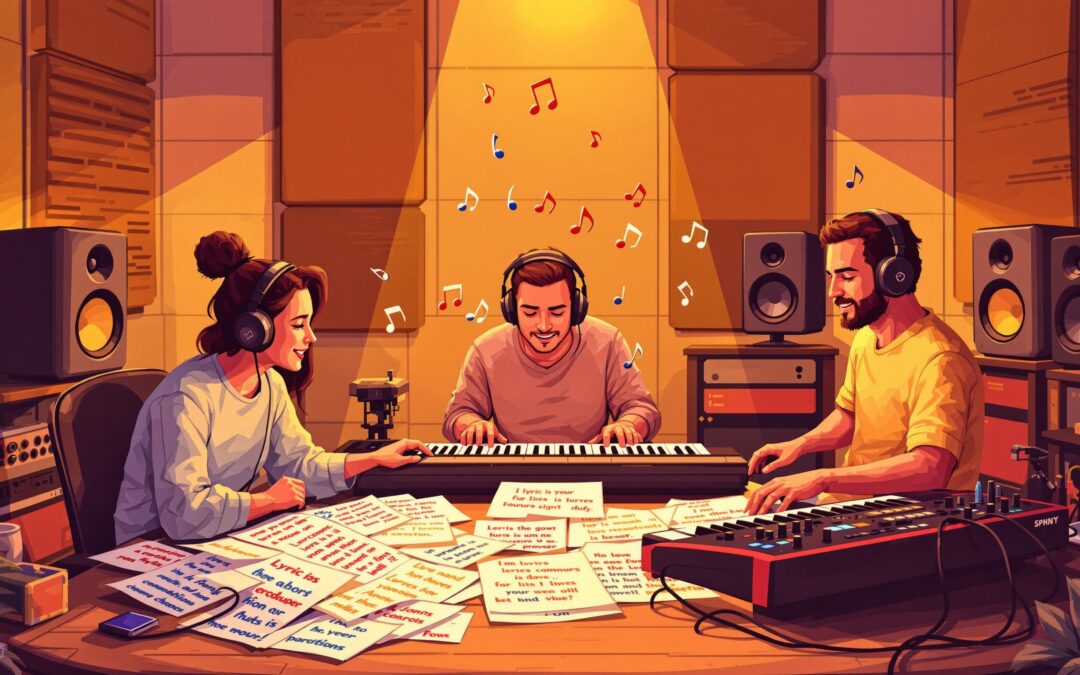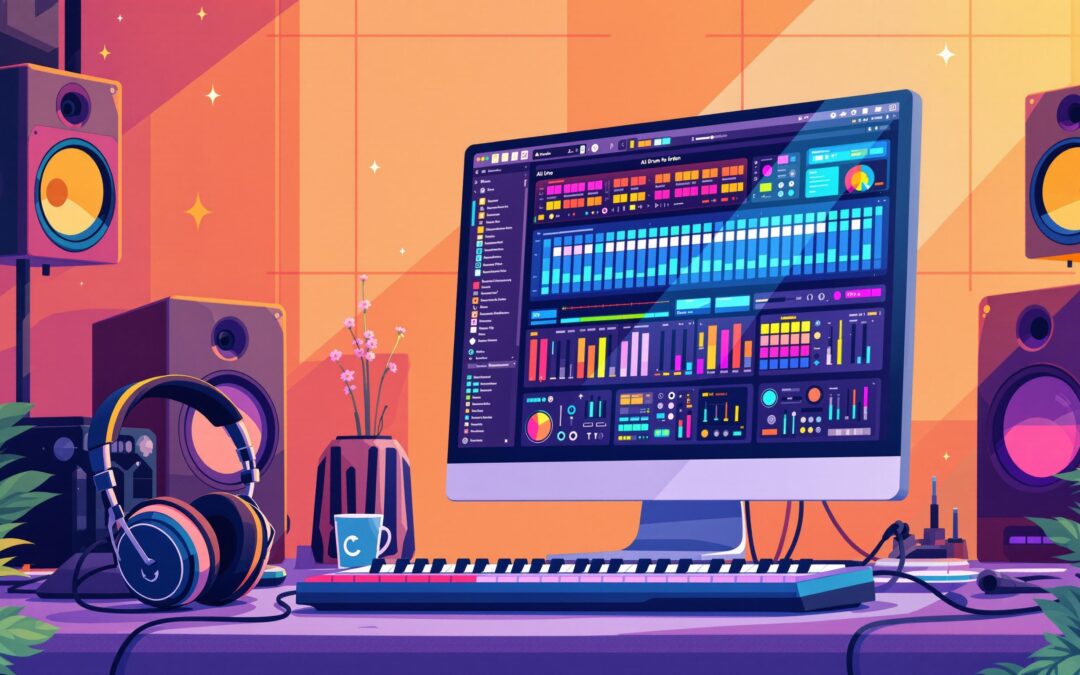AI-generated music is everywhere, and it’s getting harder to tell if a track is made by a human or a machine. Why does this matter? Human-created music is often rated higher, earns more, and feels more authentic. Meanwhile, AI music can flood streaming platforms, causing financial and artistic issues for real artists. To avoid being fooled, here’s what you need to know:
Key Differences Between AI and Human Demos:
- Sound Quality: Human demos sound warmer and more dynamic; AI tracks can feel flat or overly polished.
- Emotional Expression: Humans bring nuance and emotion; AI often lacks depth.
- Timing: Human performances include natural variations in tempo and rhythm; AI is usually too consistent.
- Song Structure: Human songs follow familiar patterns like verse-chorus-bridge; AI may create uneven or repetitive structures.
Quick Comparison Table:
| Feature | Human Demos | AI-Generated Demos |
|---|---|---|
| Audio Quality | Warm, detailed, natural | Polished but flat, sometimes tinny |
| Emotional Depth | Organic, nuanced | Programmed, less expressive |
| Timing | Slight variations, natural flow | Too precise, lacks spontaneity |
| Song Structure | Coherent, genre-aware | Repetitive, uneven transitions |
How to Verify:
- Listen Closely: Watch for robotic vocals, repetitive patterns, or abrupt transitions.
- Use Tools: AI detectors like Ircam Amplify (98.5% accuracy) can confirm if a track is machine-made.
- Get Expert Help: Audio specialists or professional platforms can verify authenticity for high-stakes projects.
By learning these differences, you can spot AI tracks and make informed choices in music production or listening.
AI vs Human Generated Music: Can You Tell the Difference?
How AI and Human Demos Sound Different
Telling AI-generated demos apart from human performances comes down to recognizing key differences in how they sound. While AI has made strides in creating music, there are still subtle details that set the two apart.
Comparing Sound and Expression
Human performances often bring emotional depth and dynamic shifts that AI struggles to match. Even when AI produces technically accurate music, it frequently lacks the subtle imperfections and emotional nuances that make human performances stand out.
| Performance Aspect | Human Demos | AI Demos |
|---|---|---|
| Dynamic Range | Natural shifts in volume and intensity | More consistent and predictable changes |
| Emotional Expression | Organic changes tied to the music’s context | Programmed transitions, less nuanced |
| Sound Quality | Warm and detailed with acoustic subtleties | Polished but missing natural warmth |
These differences go beyond just sound quality, touching on specific performance characteristics.
Vocal and Instrument Differences
In human demos, you’ll notice natural shifts in breath control, articulation, timbre, and how instruments are played. These elements contribute to a sense of authenticity that is harder for AI to replicate.
Timing and Natural Variation
Timing is another area where human performances shine. Musicians naturally introduce tiny variations in timing and tempo that give their music a unique feel.
-
Micro-timing Variations
Humans can pick up on timing differences as small as 10 milliseconds . These subtle shifts add a natural flow to the performance. -
Natural Tempo Fluctuations
Tempo changes of about 5% are noticeable to listeners . These spontaneous adjustments, like slight rubato or swing, create a more organic and expressive sound that AI often lacks.
Next, we’ll look at ways to verify whether a demo is human-made or AI-generated.
sbb-itb-1c6af30
Spotting AI vs Human Music Structure
Looking at the structure of a song can help you figure out whether it was created by a human or AI. The way musical elements are arranged often gives away their origin.
Song Structure Patterns
Human composers tend to stick to tried-and-true structures that enhance storytelling and evoke emotion.
| Structure Type | Common in Human Music | AI Tendency |
|---|---|---|
| Verse-Chorus (AB) | Clear section distinctions, smooth transitions | Sections may blur; transitions can feel inconsistent |
| AABA (32-bar) | Bridges used purposefully for contrast | Bridges may lack clear musical intent |
| Verse-Chorus-Bridge | Balanced section lengths | Sections may feel uneven or disconnected |
Unusual Musical Choices
The structure of a song – beyond its sound and performance – can also hint at its origin. OpenAI notes:
"While the generated songs show local musical coherence, follow traditional chord patterns, and can even feature impressive solos, we do not hear familiar larger musical structures such as choruses that repeat"
AI systems like Jukebox require significant processing time – up to 9 hours to generate just one minute of audio . This limitation often results in simpler structures and less cohesive musical arrangements.
Genre-Specific Details
Each musical genre has its own structural conventions, which human composers naturally follow. Here are some examples of genre-specific structures:
- Pop Music: Katy Perry’s "Firework" uses the classic Verse/Pre-Chorus/Chorus/Verse/Pre-Chorus/Chorus/Bridge/Chorus structure .
- Rock: Radiohead’s "High and Dry" follows an ABABCB pattern, with every section serving a distinct purpose .
- Jazz: John Coltrane’s "Giant Steps" employs the Head-Solo-Head format, showcasing intentional improvisation .
AI often struggles with these unique patterns. For instance, OpenAI’s MuseNet:
"has a more difficult time with odd pairings of styles and instruments (such as Chopin with bass and drums). Generations will be more natural if you pick instruments closest to the composer or band’s usual style"
Additionally, professional songs typically stick to a runtime of about 3 minutes and 30 seconds . Human composers understand these industry norms, while AI-generated music may ignore such practical constraints, creating pieces that feel out of place.
These differences in structure and genre awareness provide a solid foundation for further analysis of a demo’s origins in the next section.
Methods to Check Demo Sources
Understanding the differences in demo origins is key, and these methods can help confirm whether a track is AI-generated.
Professional tools specialize in identifying AI-generated music with precision. For example, Ircam Amplify’s "AI Music Detector" boasts an impressive 98.5% accuracy rate for identifying AI-created tracks . This tool processes thousands of tracks through its API and provides detailed confidence scores.
| Tool Name | Key Features | Best For |
|---|---|---|
| Ircam Amplify | 98.5% accuracy, API integration, confidence scoring | Labels, distributors, streaming platforms |
| Cochl.Music | Genre, mood, tempo analysis | Music producers, content creators |
| SONOTELLER.AI | Lyrics, genre, BPM, key analysis | Songwriters, music supervisors |
What to Listen For
If you don’t have access to these tools, careful listening can also reveal clues. Jake Peterson, Senior Technology Editor at Lifehacker, notes:
"AI-generated music frequently has a classic mp3 sound. It’s not crisp; instead, it’s often fuzzy, tinny, and flat" .
Here are some technical signs to watch for:
- Audio Quality: AI-generated tracks often sound fuzzy or tinny, lacking clarity.
- Vocal Consistency: Vocals may sound overly smooth or robotic, with unnatural modulation.
- Repetitive Patterns: Look for melodies that repeat without natural variation.
- Structural Issues: Pay attention to sudden changes in choruses or inconsistent lyrics.
Getting Expert Help
For more thorough verification, consider these professional options:
- Detection Services: Tools like Ircam Amplify offer services starting at $2 per credit, with enterprise plans from $495 per month. These services can provide legal-grade verification reports .
- Audio Specialists: Experts can identify subtle technical inconsistencies, such as unnatural vocal transitions or timing issues.
- Distribution Platforms: Major platforms already screen uploads with AI detection systems.
"Automated detection is the one-and-only weapon the industry needs to tag these tracks as such, before taking action" .
For high-stakes projects, verifying through official distribution channels can help avoid legal complications.
Conclusion: Making Better Music Choices
By understanding the differences between AI and human-created demos and using both to their strengths, you can improve your music production while steering clear of scams.
Quick Reference Guide
Here’s how to spot the differences between AI and human demos:
| Key Features | Human Demos | AI-Generated Demos |
|---|---|---|
| Audio Quality | Rich with dynamic range | Often fuzzy or tinny |
| Vocal Expression | Full of natural emotion | Robotic or monotone |
| Song Structure | Smooth and coherent | Abrupt or disjointed |
| Musical Choices | Fits the genre well | Odd or mismatched combinations |
Combining AI and Human Demos
Once you’ve learned to distinguish between the two, the next step is blending their strengths. A great example is Warner Music Group’s partnership with Endel, where AI algorithms create soundscapes tailored to specific listener needs, like time of day or activity .
Here are some practical ways to integrate both:
- Start with AI: Let AI handle initial mixing or idea generation, then refine with human input.
- Balance creativity: Use AI to experiment but ensure your artistic vision stays intact.
- Verify thoroughly: For commercial projects, apply extra checks to maintain quality.
- Know their roles: AI demos are great for prototyping, while human demos bring the polish needed for final production.
AI and human demos each bring unique strengths to the table. AI can speed up technical tasks or spark ideas, but it’s human creativity that adds the emotional and artistic layers that make music unforgettable.
